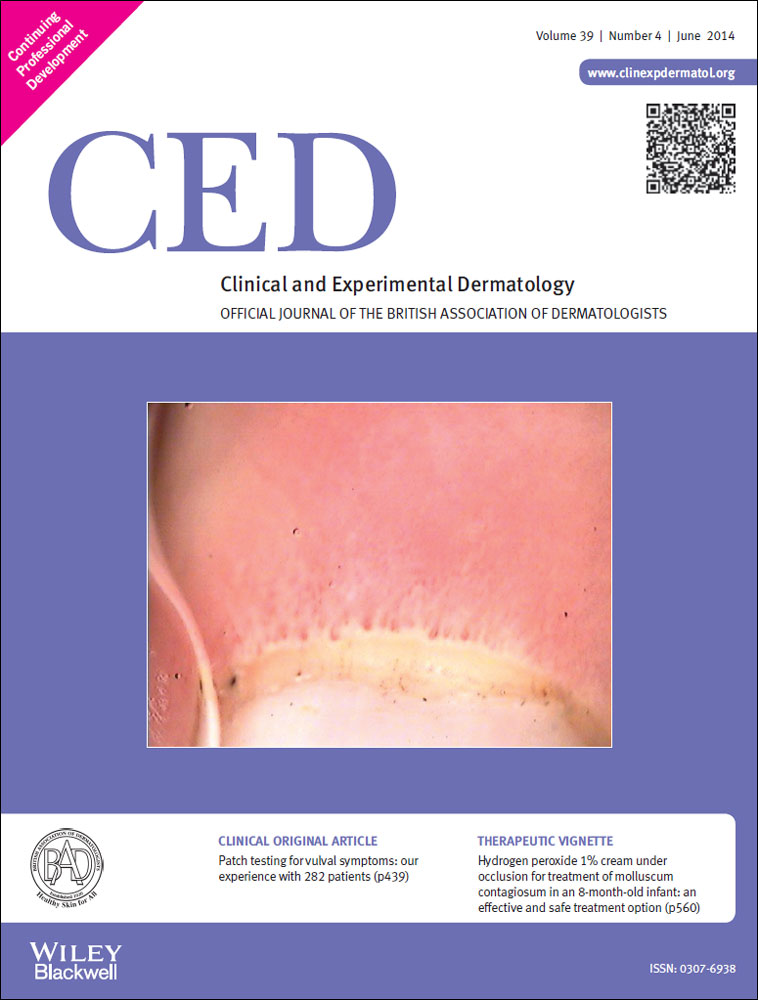Olmsted syndrome in an Iranian boy with a new de novo mutation in TRPV3
Summary
Olmsted syndrome (OS) is a rare congenital skin disorder characterized by palmoplantar keratoderma, periorificial hyperkeratotic lesions and alopecia. Constriction of digits, onychodystrophy and pruritus may also occur. Recently, pathogenic heterozygous mutations in TRPV3 were identified, with most cases showing de novo dominant inheritance. We present the clinical and molecular features of OS in a 10-year-old Iranian boy. He had mutilating palmoplantar keratoderma, periorificial keratotic plaques, diffuse alopecia and constriction bands (pseudoainhum), which led to autoamputation of two digits. TRPV3 was sequenced and a new de novo heterozygous missense mutation, c.2076G>C (p.Trp692Cys), was identified. This case illustrates the characteristic clinical features and complications that can present in OS, and further expands the molecular basis of this genodermatosis.




